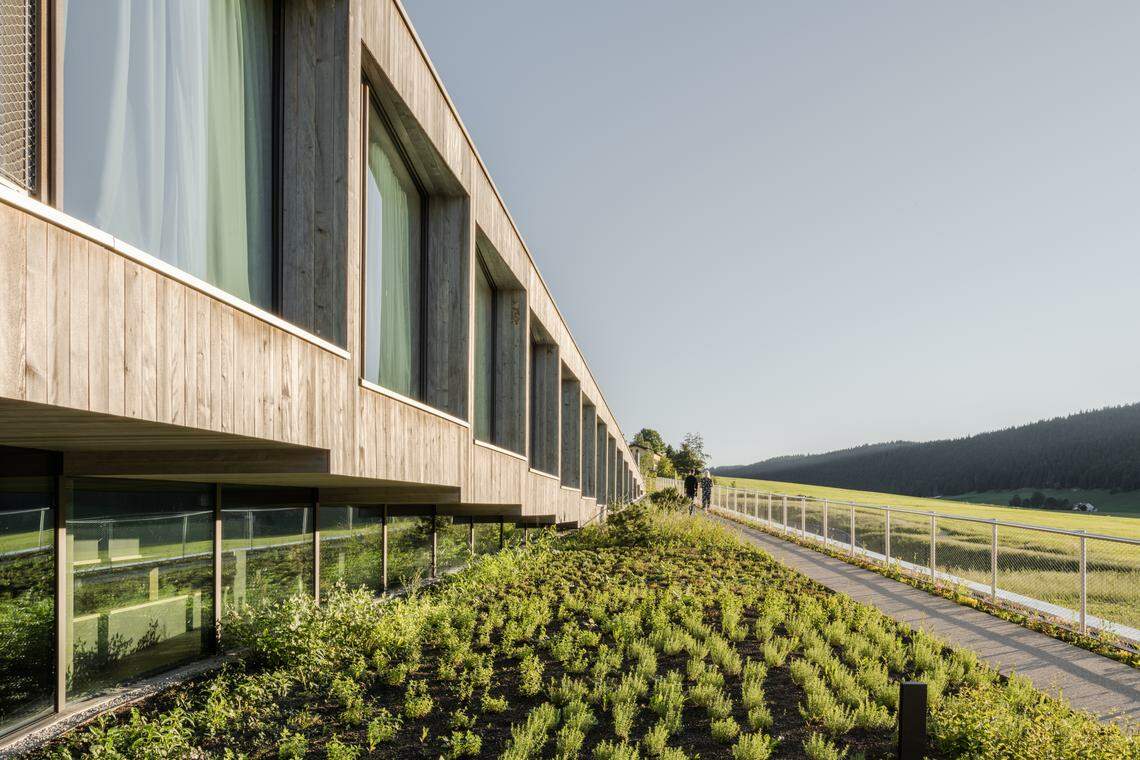Inside the luxury hotel that Audemars Piguet built
The swanky Hotel des Horlogers’ architecture and decor take inspiration from the landscape of the Vallee de Joux, and pays tribute to the watchmaking legacy of the town of Le Brassus

Time is everything in Le Brassus.
Located north of Geneva, it is the birthplace and home of some of the world’s most respected Swiss luxury timepiece brands such as Audemars Piguet (AP), Blancpain and Jaeger-LeCoultre.
Since the end of the 18th century, it has been where watchmaking artisans such as Louis-Benjamin Audemars, Ami Lecoultre and Louis-Elysee Piguet have plied their trade. Le Brassus’ horological roots can be traced back to the historic site where the former Hotel des France once stood.
Built in 1857, it was an important stop on the Chemin des Horlogers – the watchmaking route that connected the Vallee de Joux workshops to Geneva.
After it closed in 2000, AP bought it over and rebranded it in 2005 as Hotel des Horlogers (French for “Watchmakers’ Hotel”), a nod to the region’s watchmaking know-how and legacy. In 2016, it was rebuilt and after four years, it reopened last June as a 50-room luxury boutique hotel.
Because of the brand’s heavy involvement in the project, Hotel des Horlogers is often nicknamed “the AP hotel”, but the last thing you’d find is any kind of hard sell going on. (Sorry, there is no boutique or gift shop either, in case you are thinking of snagging a Royal Oak timepiece as a souvenir of your stay).
SEE ALSO
A NEWSLETTER FOR YOU

Lifestyle
Our picks of the latest dining, travel and leisure options to treat yourself.
But the hotel is right next door to the AP manufacture and steps away from the original building that Jules Louis Audemars and Edward Auguste set up back as their workshop in 1875. It is also near the new Musee Atelier Audemars Piguet, to which guests can have access with prior reservations.
Like the museum, Hotel des Horlogers is designed by global architecture firm BIG (Bjarke Ingels Group) and built by Swiss architecture office CCHE.
The building’s avant-garde architecture is inspired by the Vallee de Joux’s topography, with zig-zagging slabs that lead to the meadows behind the hotel.

The motif is replicated indoors, in that the hotel’s interior passageway also zig-zags, connecting the 50 rooms and linking them to the lobby, restaurants, bar, wellness centre and seminar rooms.

French interior design architect Pierre Minassian’s firm AUM brings the Vallee de Joux landscape indoors: The ceiling of the lobby is festooned with white trees, in a nod to the Risoud Forest being reflected on the surface of the Lac de Joux; the large lamp shades in the restaurants and rooms take after the mushrooms and foliage found in the valley.

Local stone and wood are used in the various furnishings around the hotel., and the modern rooms’ large bay windows open up to gorgeous views of the meadows and woods during the day, immersing one in nature even while indoors.
Hotel des Horlogers also has sustainability credentials, having earned its Minergie-ECO certification with its green practices.
The premises are partially powered by 126 solar panels; the water-heating system is supplied by a remote local wood-based heating network.
Organic waste is converted into electricity and heat, and the hotel packages its single-use items in biodegradable containers, avoiding plastic.
These sustainable efforts extend also to the restaurants overseen by the three-Michelin-starred chef Emmanuel Renaut.

The menu at the 80-pax Le Gogant and intimate La Table des Horlogers feature herbs, fruits and vegetables grown and harvested from the hotel’s garden; over at Bar des Horlogers, the signature cocktails are crafted from plants from the Risoud Forest.

Guests who book themselves a treatment at the in-house spa are pampered by products made from plants and flowers native to the Vallee de Joux and to the neighbouring Valais region.

Watch tourism is one of Le Brassus’ main draws. But aside from dropping in at the premises of the many big-name watchmakers in the area, visitors can also hike or bike on the area’s many trails or take tours the hotel can help arrange.
All you need to do is make time for it.
The writer was a guest of Hotel Des Horlogers. Check www.hoteldeshorlogers.com for more information
BT is now on Telegram!
For daily updates on weekdays and specially selected content for the weekend. Subscribe to t.me/BizTimes
Lifestyle
Former Zouk morphs into mod-Asian Jiak Kim House, serving laksa pasta and mushroom bak kut teh
Massimo Bottura lends star power to pizza and pasta at Torno Subito
Victor Liong pairs Aussie and Asian food with mixed results at Artyzen’s Quenino restaurant
If Jay Chou likes Ju Xing’s zi char, you might too
Mod-Sin cooking izakaya style at Focal
What the fish? Diving for flavour at Fysh – Aussie chef Josh Niland’s Singapore debut
